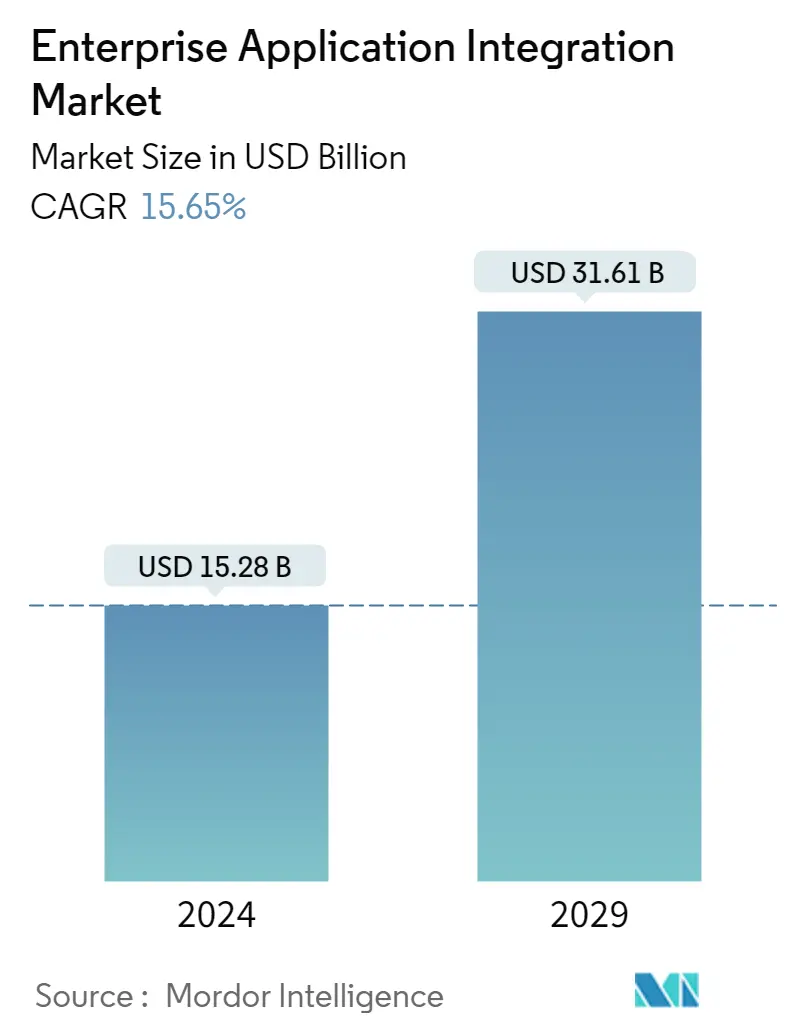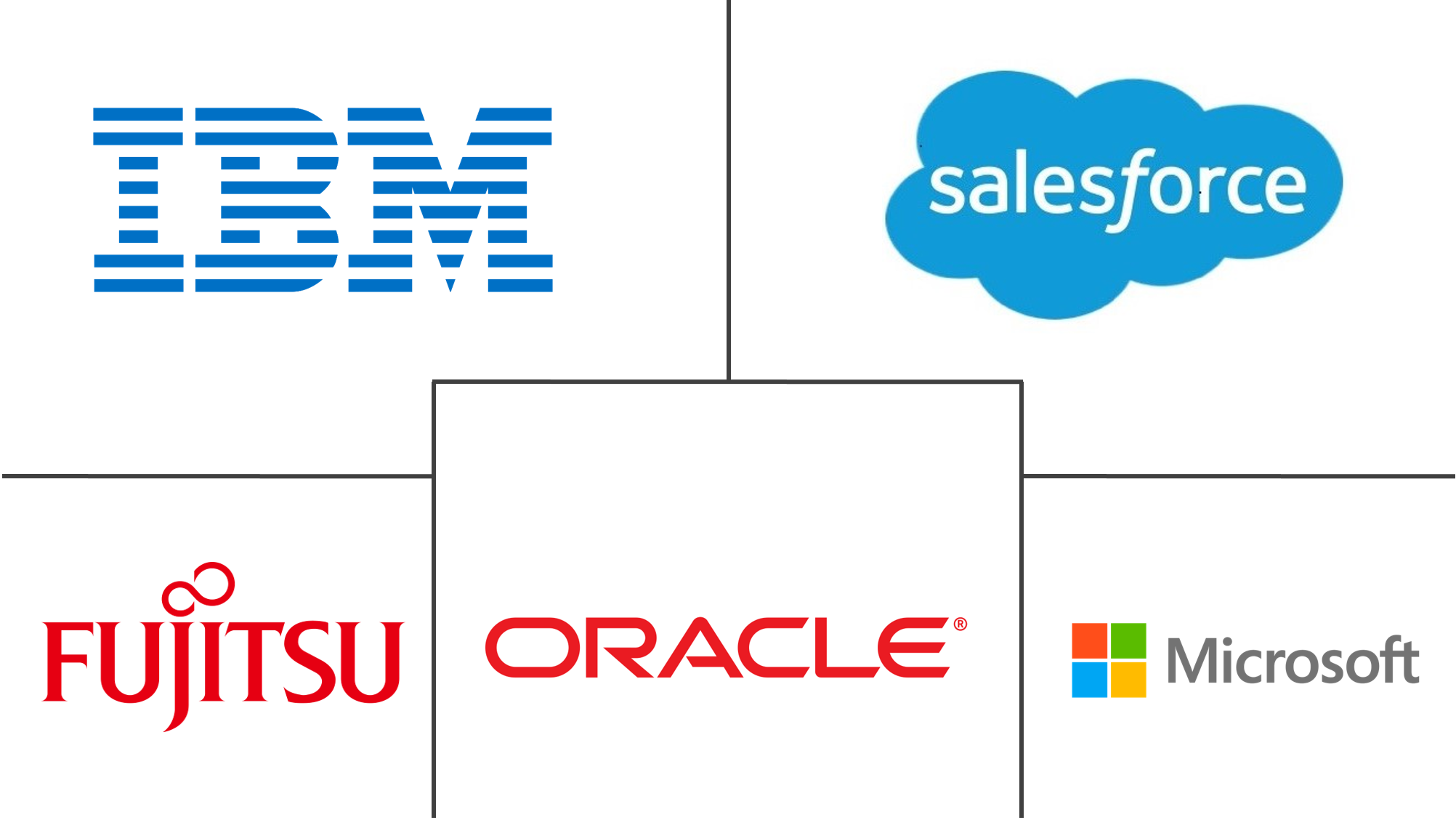Market Size of Enterprise Application Integration Industry

| Study Period | 2019 - 2029 |
| Market Size (2024) | USD 15.28 Billion |
| Market Size (2029) | USD 31.61 Billion |
| CAGR (2024 - 2029) | 15.65 % |
| Fastest Growing Market | North America |
| Largest Market | North America |
Major Players
*Disclaimer: Major Players sorted in no particular order |
Need a report that reflects how COVID-19 has impacted this market and its growth?
Enterprise Application Integration Market Analysis
The Enterprise Application Integration Market size is estimated at USD 15.28 billion in 2024, and is expected to reach USD 31.61 billion by 2029, growing at a CAGR of 15.65% during the forecast period (2024-2029).
Enterprise application integration (EAI) enables applications to share data wherever they are hosted. EAI unites databases and workflows associated with business applications to ensure information is represented and used consistently. With enterprise application integration, changes to the core business data in one application are correctly reflected in other applications.
- Businesses have come to understand that the most critical data now comes from all the complex apps employed in a company. Therefore, enterprises concentrate more on PaaS than traditional iPaaS solutions that use a point-to-point integration technique. By removing data from the restrictions of all the relevant apps, PaaS solutions aid in data management and integration. EAI will keep including data integration, resulting in a more practical centralized platform.
- Further, businesses frequently use various software operating inside different incompatible frameworks. Due to their disparate frameworks, software, including ERP systems, CRM apps, supply chain management applications, BI applications, payroll, and HR systems, cannot exchange data. As a result, automating straightforward chores becomes challenging. A middleware infrastructure that enables open and safe data sharing between these heterogeneous apps and legacy devices is introduced as part of emerging application integration trends (EAI).
- Enterprises are relentlessly moving ahead with modern technology. Technologies, such as cloud computing, Big Data, IoT, and others, streamline information sharing and provide ease in controlling data. Business organizations quickly implement EAI, which helps unites the databases and workflows. Trends, such as diverse workflow solutions, BYOD, migration to cloud-based solutions, and real-time application integration, are positively driving the market's growth.
- Open-source and proprietary software are among the substantial alternative for enterprise application integration. Installing enterprise application integration (EAI) may be a costly endeavor and a long-term strategic move. Companies may need to acquire numerous Integration Platform stack solutions, such as an API Manager, Enterprise Service Bus (ESB), a portal, and a data services platform. The emergence of open-source communities and methodologies for creating new technologies coincided with the recent spread of cloud computing. Open-source communities have arisen over the last several decades, in which developers cooperate on projects by openly publishing, copying, and altering source code. Technological advancements are accomplished faster and more readily when a community of developers uses and modifies specific projects. Such developments in open-source software are expected to hamper the market growth of the enterprise application integration market.
- The COVID-19 outbreak shed light on the businesses and technologies that endured and advanced in the post-COVID-19 era. Cloud computing, social and collaboration tools, mobile computing, analytics, and business intelligence are among the technology-supporting enterprise applications that assist businesses in thriving (BI). Business software, significantly larger suites like enterprise resource planning (ERP), and a few others must more than ever be developed to take advantage of all these technologies.
